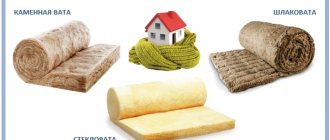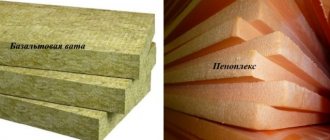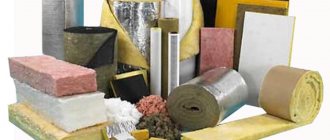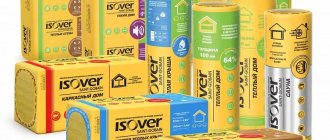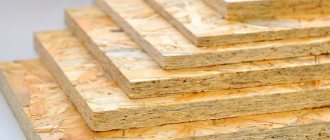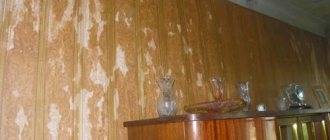We study all the ways to remove glass wool from clothes and skin in order.
/ Insulation materials /
Hello to all those few readers who found me in the vastness of the world. Today I’ll give you some self-tested advice on how to get rid of glass wool on your skin.
Not long ago, at work, I was doing a little cleaning of trash in the industrial premises; among the trash, as luck would have it, there were small pieces of glass wool, the same Soviet-hardened one, prickly and unpleasantly itchy when it came into contact with open areas of the skin.
I had to get rid of the glass wool manually, and my hands were wearing ordinary cotton gloves, which, of course, will not protect against cotton wool. As a result, after a few minutes my hands began to itch terribly and I felt an unpleasant tingling sensation from the glass particles.
I didn’t want to endure this feeling all day, but soap, as you know, won’t get rid of glass wool particles. Therefore the question
Tips for cleaning glass wool from your body
After the work is completed, it is necessary to clean the body of glass microparticles. To do this, you need to take a shower, but you should remember some rules that must be followed in order to prevent irritation from glass wool:
1. In order to wash off particles of glass wool fibers, you need to take a cool shower. Make the shower pressure as high as possible. Before taking a shower, you need to shake off your head, because there is likely to be a significant amount of glass wool particles accumulated on your hair.
2. Under no circumstances should you take a hot shower - this is due to the fact that when taking a hot shower, the pores of our skin expand and microparticles of glass can penetrate into them. This will only make the itching worse!
3. When taking a shower, do not use a washcloth or soap - just rinse.
4. After rinsing under a strong stream of cool shower, you need to dry without using a towel.
5. Next, you should take a cool shower again, but using a washcloth and shower gel or soap.
If after cleaning the glass wool from the skin there is itching, you can try: wet a towel with cold water and gently apply it to the inflamed area of the skin and wait a little. If the itching of the skin continues, then aloe, applying milk to the irritated skin can help relieve it, and sometimes a calendula solution helps.
Similar actions should be performed after gluing the glass wallpaper. Fiberglass wallpaper, like glass wool, can also leave an unpleasant itching on the skin, because... this building material is also made of fiberglass.
: How to plaster mineral wool
Best answers
Samoilenko Vadim:
spill with summer water. but for a long time
siddis:
How much does this robe cost, is it really impossible to buy it anymore, is it a fancy dress embroidered with gold? NO. This is a robe. Buy another one. Write this one off as low value.
Lelka:
It would not be possible to wash it off, but first to remove it from the clothes with a sticky roller. It is unlikely to come off when washed.
?? ??:
you can’t wash it, since glass wool is wool with rubble glass, but you can wash it, but only if there are other clothes under the glass wool clothes
LIOKO:
I doubt it's possible
Andrey Volkov:
Throw it away
Grandfather Au:
no way - just collect it with a round sticky “brush” I don’t know what it’s called
then with a vacuum cleaner
Igor Iskandarov:
Wash two or three times.
Adviсe
Article information
First aid
In other languages:
English: Remove Fiberglass Slivers from Your Skin, Español: quitar astillas de fibra de vidrio de tu piel, Deutsch: Glaswolle von der Haut entfernen, Português: Remover Fragmentos de Fibra de Vidro da Pele, Italiano: Rimuovere i Frammenti di Fiber di Vetro dalla Pelle, Bahasa Indonesia: Mengeluarkan Serpihan Kaca Serat dari Kulit, Français: retirer des échardes de laine de verre de la peau, Nederlands: Glaswolsplinters uit je huid verwijderen, Tiếng Việt: Loại bỏ vụn sợi thủy tinh trên da, ا لعربية: إزالة شظايا الألياف Quote:去除皮肤上的玻璃纤维碎片, 한국어: 피부에 박힌 유리 섬유 파편을 빼내는 방법
This page has been viewed 10,626 times.
But as?
Published May 7th, 2013. Author akak
Glass wool is the most common insulation for houses. Since many residents of our country build and, accordingly, insulate houses on their own, many people use this material. They use it and then they itch. So how do you wash off glass wool if it gets on your skin?
Instructions
Difficulty level: Easy
1 step
Firstly, if glass wool gets on your skin, do not scratch the affected area under any circumstances, as this will only rub glass needles into your body.
Step 2
In general, you need to protect your eyes from getting glass wool and wear special glasses, but if this happens, start blinking rapidly. This will remove the glass from your eyes. Only after half an hour can they be washed.
Step 3
If glass wool gets on your body, take a cold shower. Do not use soap or shower gel and a washcloth or sponge. In addition, the water pressure should be as strong as possible.
Step 4
Before showering, try to shake glass wool out of your hair by shaking your head or running your hands through your hair.
Step 5
After taking a shower, do not use a towel. Wait until your body dries and shower again.
Step 6
Again, wait until dry. Only after this take a shower with a washcloth and gel. Now you can use a towel.
Step 7
Items that have been exposed to glass wool must be washed separately from all other items. Moreover, it is better to do this with laundry soap and gloves. Carry out 3-4 washes.
Step 8
And do not forget that it is recommended to work with glass wool only in special clothing or at least with protected eyes, respiratory tract (respirator) and clothing that completely covers the body.
a-kak.info
How to clean glass wool from body and clothes
As you know, glass wool is a fibrous material used for thermal insulation purposes. The main component in the production of glass wool is glass.
In this regard, like glass, glass wool fibers have a crystalline structure. All this explains the appearance of itching when working with glass wool - small particles of glass dig into the skin and also get into the pores, and this causes irritation and itching.
One of the mandatory conditions when working with glass wool is the use of special clothing and respiratory protection (for example, a respirator) and eyes (you can use safety glasses).
Similar protective equipment must be used when working with mineral wool. When working with glass wool or mineral wool you need to look like the image below.
This protective clothing is inexpensive, but its use will prove to be a big savings later. Why? Read on.
Be sure to take off all your good clothes and put on overalls - if you don’t do this, then all your clothes will become unusable and, as a rule, they can no longer be cleaned.
Below we will give some tips that will help you clean glass wool from clothes, but they will not always help you get rid of glass wool from clothes.
An important rule that must be remembered when working with glass wool: even if glass wool gets on the skin, under no circumstances should you rub this area! If you start rubbing, small particles of glass will dig into your skin and it will only get worse. If glass wool gets onto an unprotected area of skin, it must be carefully shaken off and under no circumstances rubbed!
Tips for cleaning glass wool from clothing
In order to try to preserve clothing that has been exposed to glass wool, you should try to do the following:
1. Clothes must be vacuumed. There is no need to immediately try to wet clothes - this can only do harm, because it is much more difficult to remove glass wool from wet clothes than while the clothes are dry.
Carry out all actions to get rid of glass wool strictly wearing rubber household gloves (such seals are sold in any hardware store) - if you do not use gloves, then you will have to clean the glass wool not from clothes, but to treat the skin.
2. After using the vacuum cleaner, it is necessary, without removing rubber gloves, to wash the clothes by hand. Wash separately from other laundry! It is advisable to repeat hand washing 3-4 times.
When you wash your clothes, keep in mind one piece of advice: you don’t need to rub the laundry, you just need to rinse it, otherwise the glass wool particles will stick into the threads of the clothes and then everything will be much more complicated.
Rinse clothes with a powerful stream of water between washes.
3. Next, you need to dry your clothes thoroughly.
4. When the clothes are dry, take the vacuum cleaner again and vacuum the clothes again.
5. Evaluate the result.
If these actions do not lead to the desired result, then there are two ways out:
1. Try dry cleaning your clothes.
2. Throw it away.
Also keep in mind that if the clothes on which glass wool has come into contact are wool, then most likely you will have to part with them - it is almost impossible to clean woolen clothes from glass wool.
In order to avoid the need to clean clothing or skin from glass wool, use protective equipment!
Source: https://remontyes.ru/5901-kak-ochistit-telo-i-odezhdu-ot-steklovaty.html
Is glass wool harmful to health?
The harm of glass wool lies in its mineral particles. During operational processes, microparticles from the insulating material are released into the air. Glass wool is more harmful to health indoors than outdoors. When the room is rarely ventilated, the particles end up in a person’s inhalation tract and penetrate into the lungs.
The health hazards of glass wool manifest themselves not only in the form of allergic reactions. Over time, with constant contact with the material and non-compliance with safety rules, various diseases affecting the respiratory system can develop. In some cases, even oncological complications were observed.
The danger of glass wool manifests itself not only when inhaling its vapors, but also through direct contact with the skin. The most common cases of negative effects of insulation were observed during installation. Solid particles can damage the skin layer and penetrate deep into the skin. This causes itching and irritation.
We suggest you familiarize yourself with the best ways to remove paint stains from jeans, from gentle to powerful
Microscopic particles containing glass may damage the eyes. To avoid serious complications, you should immediately consult a doctor and undergo an examination.
How to remove glass wool from clothes and skin, how to treat your hands
Due to the presence of glass fibers in glass wool, removing its components from clothing and skin is difficult. The material is very irritating to the skin and causes itching. It is necessary to work with it only in special clothing. Various methods are used to remove glass wool from the body and clothing.
Recommendations for cleaning the skin from this type of mineral wool
Do not rub the area where fragments of material have fallen. If its particles settle on your hands, then it is enough to shake them off or blow them off with a strong stream of air.
When working with the material you need to use glasses. If glass fibers get into your eyes, you should start blinking frequently. This will facilitate the rapid removal of fiberglass particles from them. Do not immediately rinse your eyes with water. This will make the situation worse.
You can wash your eyes only 30-35 minutes after fiberglass particles get into them. This must be done carefully. Don't rub your eyes too much. They need to be washed with plenty of cool water.
If the procedure does not help, you should contact an eye surgeon.
If glass wool fragments get into your eyes, you should immediately start blinking rapidly.
When working with the material, it is important to use a hat. If glass wool gets on your scalp, you need to shake your hair with your hands. This should be done with gloves. Your head should be bowed low over the bathtub. Eyes must be closed. Fibers can become trapped and cause irritation.
Below is a step-by-step method on how to remove glass wool from your skin. Necessary:
- Take a non-hot shower immediately. The water pressure should be maximum. Do not rub your skin with a washcloth. Do not use soap.
- Allow the body to dry. Do not dry your body with a towel after showering.
- Take a shower again. The water in it should not be hot. When washing, you can already use soap and a washcloth.
Important! Do not wash in hot water. The shower should be cool. Hot water causes skin pores to expand. Microparticles of fiberglass may get caught in them, which will increase irritation.
If your body itches after taking a shower, it is recommended to apply a towel soaked in cold water to the exposed areas. You need to keep it on the skin for several minutes. If irritation does not go away, it is necessary to use emollients. You can moisten the skin with aloe juice or calendula solution.
You can eliminate irritation from glass fibers getting on your skin using aloe juice.
There are ways of what to do if your hands itch after removing glass wool from them. You can put a towel soaked in milk on them. It is recommended to use a softening hand cream. You can also apply shaving foam to the skin of your hands.
Ordinary plasticine will soften the itching on your hands. You need to knead it thoroughly. After this, you need to scrub your hands and anoint them with cortisone cream.
Important! You can lubricate the damaged skin with vegetable oil, wait a couple of minutes and rinse it off with warm water. Finally, treat the damaged area with peroxide.
Recommendations for cleaning fiberglass particles from clothing
It is necessary to work only in special clothing. If the material gets on ordinary things, you need to quickly remove it from them. Below is a method on how to remove glass wool from clothing. Necessary:
- Vacuum all items.
- Wash them by hand. Clothes must be washed separately from other items and only with gloves. Do not rub the laundry during washing. Simply rinse it thoroughly by placing it under a strong stream of cold water.
- Dry clothes thoroughly.
- Vacuum things again.
Remove fiberglass residue from clothing by rinsing it under a strong stream of cold water.
Do not immediately wet laundry that has been exposed to glass fibers. They penetrate deeper into wet fabric, after which it will be difficult to remove them from clothing. It is recommended to blow off fragments of material from things with a vacuum cleaner running at full power. Additionally, you can go over things with an antistatic roller.
A roller can be used to remove fiberglass from items.
Do not machine wash clothes containing fiberglass particles. Suitable for hand washing only. It is recommended to repeat this up to four times. If washing at home does not solve the problem, then you need to take the items to the dry cleaner. It is important to inform employees in advance that there are fiberglass fragments left in the clothing.
You should not work with the material in woolen items. In the future, it will be difficult to clean them from glass wool. You should not attempt to remove mineral wool fragments from clothing if it is heavily contaminated with them. Even repeated washing will not remove the glass fibers from it. It is recommended to throw away such clothes and buy new ones.
What you need to pay attention to when choosing workwear for a builder
If finishing work involves the use of glass wool, then you should choose the right workwear for it. She must be:
- dense;
- continuous (do not have any open areas);
- made from dirt-repellent materials (for quick cleaning of fiberglass);
- wear-resistant.
It is necessary to give preference to overalls in the form of a suit. The jumpsuit has open areas in the neck and arms. During operation, glass fibers may get caught on them and cause irritation.
As an alternative to thick fabric for workwear, it is allowed to use laminated fabric. It is also suitable for working with glass wool. The following items should be included with the overalls:
- gloves made of polymer fabric;
- respiratory shield;
- glasses.
When working with glass wool, the builder must be equipped with a suit made of thick fabric and protective equipment (goggles, respirator, gloves)
Overalls must be resistant to cutting damage. It should not be deformed after washing. You should choose workwear made from polymer fabrics. A product made from cheap synthetics has low protective properties. It wears out quickly. Overalls must be fire resistant.
To work with glass wool, it is recommended to purchase a product that does not have open pockets. Dust and other particles often accumulate in them. Workwear must be accompanied by durable shoes with thick soles. You must select the product by size. The item should not restrict movement. You should purchase moisture-resistant workwear.
Source: https://ZnatokTepla.ru/utepliteli/kak-ubrat-steklovatu-s-odezhdy-i-kozhi.html
Treatment of allergies to glass wool
To date, there is only one effective method of treating phenol allergies, and this is the use of a drug based on a special enzyme that breaks down phenol. There is also another method, but due to its low efficiency it is used extremely rarely.
The essence of the method is to completely avoid foods containing phenol, namely: apples, bananas, broccoli, tomatoes, dried fruits. Since with such a diet the body is deprived not only of phenol, but also of many beneficial substances contained in these products, it cannot become an effective method in the treatment of allergies.
Glass wool on hands!!! itches and pricks. What to do?
Due to the presence of glass fibers in glass wool, removing its components from clothing and skin is difficult. The material is very irritating to the skin and causes itching. It is necessary to work with it only in special clothing. Various methods are used to remove glass wool from the body and clothing.
In case of a burn, it is strictly prohibited:
- lubricate the burn area with vegetable oil, alcohol-containing preparations, iodine, brilliant green;
- sprinkle with starch;
- apply burn ointment and other medical products to the hot surface of the skin;
- apply fermented milk products to the damaged area;
- pierce or cut through the formed blisters on the skin;
- independently clean the wound from dirt or remnants of clothing;
- wash the burn with water with the addition of soda or citric acid;
- apply a plaster to the burn.
First aid for burns
A burn occurs as a result of exposure to high temperatures and immediately turns into an open wound, accessible to any microbes. Therefore, the first and most important thing to do is to free the damaged area from clothing and immediately cool the burned area. Ice from the refrigerator, snow, very cold water or any frozen product will do.
Symptoms
After receiving an injury, a person may feel a strong burning sensation in the visual area.
- lacrimation;
- photophobia;
- swelling;
- headache;
- burning sensation in the visual analyzer;
- dizziness;
- redness of the mucous membrane;
- the appearance of circles or flickering;
- feeling of soapiness of the skin;
- impairment or complete loss of vision.
There are 4 degrees of burns, which depend on the severity of tissue damage:
- Initial. The surface layers of the epithelium are damaged with the development of redness and slight swelling.
- Average. The cornea is completely damaged and a film forms on it along with erosion.
- Heavy. Necrosis of the deep layers of the eye occurs. As a result, a white-yellowish scab is formed, and the cornea becomes dull and swells greatly.
- Very heavy. The cornea, conjunctiva and sclera are affected. A scab is formed with a brownish-gray tint, and the cornea has the appearance of porcelain.
Mineral wool. Its composition and the influence of its components on human health
Mineral wool is a melt of glass, rock or slag in the form of thin fibers held together with binders based on phenolic compounds. When examining cotton wool under a microscope, individual thin glass fibers can be clearly identified. It is they, which crumble easily when touched, that cause skin itching, familiar to all builders.
According to doctors, glass, even in this form, cannot cause allergies, and unpleasant sensations on the skin are nothing more than tiny wounds that appear from contact with needle-sharp cotton wool fibers. From this we can draw an important conclusion: if glass wool does not cause allergies, its constituent fibers irritate the skin and mucous membranes.
These are substances that are found in many products, however, it is mineral wool that contains large amounts of this substance. The human body has mechanisms for processing phenols, but when an excess amount enters the body, the body cannot cope. Possessing unique properties, phenolic compounds are highly soluble in organic solvents and are strongly acidic.
The binders that make up mineral wool, based on phenolic compounds, can cause allergic and other reactions. The first signs of an allergy to phenolic compounds may be the following symptoms: redness of the face and ears (most often one ear suddenly turns red), dark circles under the eyes, skin and redness of the skin, which manifest themselves mainly when eating.
Photo: Skin rashes due to allergy to glass wool
Environmental friendliness and safety
The most important issue for many people when choosing insulation is environmental friendliness. It is worth saying that ISOVER uses glass wool and stone wool as the basis for the production of heat and sound insulation. Due to the careful processing of the pressing, the company’s engineers assure the high degree of environmental friendliness of their products. To confirm this, you can see numerous environmental certificates of conformity on the company’s website. isover insulation is made exclusively from natural materials, therefore its environmental friendliness and safety leave no doubt.
